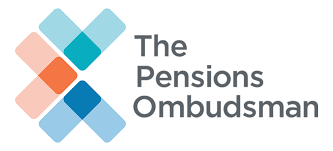The gross cost of pension income tax and national insurance contribution (NIC) relief rose from £68.1bn in 2021/22 to £70.6bn in 2022/23, according to the latest statistics from the Department of Work and Pensions (DWP).
The department’s data showed that the estimated net cost of pension income tax and NIC relief was up from £47.6bn to £48.7bn over the same period.
In 2022/23, 68 per cent of income tax relief on pension contributions was from contributions to personal or private sector occupational pension schemes, while 61 per cent of class 1 primary (C1P) NIC relief was on employer contributions to personal or private occupational schemes.
More than half (56 per cent) was relieved at the higher rate, 31 per cent at the basic rate, and 7 per cent at the additional rate.
The data comes amidst rumours that Chancellor, Rachel Reeves, could look at reforming pension tax policy as part of the government’s efforts to plug a £20bn ‘black hole’ in public finances.
The DWP’s statistics also showed that the total value of taxable payments withdrawn flexibly from pensions since pension freedoms was introduced in 2015 has exceeded £83.6bn.
In 2023/24, £15.3bn in taxable payments was withdrawn flexibly, up from £11.2bn in 2021/22 and £12.9bn in 2022/23.
Furthermore, in the first quarter of 2024, £4bn of taxable payments was withdrawn flexibly from pensions by 595,000 individuals across 1.4 million payments, with the average taxable withdrawal being £6,800 per person during this period.
This represented a 17 per cent increase in the value of payments withdrawn in this quarter compared to the same quarter in 2023, and a 15 per cent increase in the number of individuals withdrawing.
A total of £12.8bn of individual contributions were made to personal pensions in 2022/23, up from £12.7bn in 2021/22, with £2.3bn of this total being made by self-employed members, the same figure as the previous tax year.
Despite the increase, the number of members making contributions to personal pensions fell from 7.4 million in 2021/22 to 6.8 million in 2022/23, while the number of self-employed workers making individual contributions to personal pensions remained broadly consistent at 340,000 across both tax years.
In 2022/23, 32,540 individuals reported pension contributions exceeding their personalised annual allowance (AA) through self-assessment (SA), down from 56,100 in 2021/22.
The total value of contributions in excess of the AA reported via SA was £690m in 2022/23, down from £1.3bn in 2021/22.
“HMRC published guidance titled ‘Changes in your annual allowance following the public service pensions remedy’ for individuals affected by the public service pensions remedy (also known as McCloud),” the DWP noted.
“Affected individuals were instructed to report any annual allowance charges for the 2022 to 2023 tax year through the ‘Calculate your public service pension scheme adjustment’ service, rather than through SA.
“As anticipated, as a significant number of AA charges come from public service scheme members, this has contributed to the large year-on-year decline in the number and value of contributions in excess of the AA as reported by SA.”
There were a total of 13,080 lifetime allowance (LTA) charges reported through accounting for tax (AfT) returns in 2022/23, up from 11,720 in 2021/22, with the total value of LTA charges reported by schemes rising from £501m in 2021/22 to £516m in 2022/23.
Commenting on the figures, Broadstone head of policy, David Brooks, said: “Under the last government, the LTA was a lucrative source of tax revenue for the Treasury, overseeing a spike in tax receipts until its abolition in the Spring Budget of 2023. This was largely due to its reduction to £1m in 2016 and then freezing it in 2020.
“With the Chancellor setting out her game-plan for filling in the hole in the UK’s finances, and with more pain set to come at the Autumn Statement, reviving the LTA may be under consideration given Labour’s previous statements before the General Election campaign.
“The balancing act of raising revenue from large pension savings together with the complexity that could emerge from the reintroduction of the LTA, which limits pension income rather than the current regime which only restricts tax-free cash, will be very difficult. It is possible that the Chancellor will look at more subtle ways of taxing richer pensioners via National Insurance.”
LCP partner, Steve Webb, said there was "no doubt" that the Chancellor will be eyeing up the "large price tag" attached to providing tax and NI relief on pension contributions.
"This is particularly the case when more than 60 per cent of the cost of tax relief goes to those paying tax at the higher or additional rate. But raiding this pot is far from straightforward, particularly in the case of defined benefit pension schemes.
"It may well be that the new Chancellor ends up where previous Chancellors have ended up, namely finding complex technical ways to claw back reliefs from the wealthiest but leaving the majority of savers unaffected."
Latest News
-
Industry supportive of LGPS reforms; timing and implementation concerns persist
-
London Waste Limited Pension Scheme completes £22m buy-in with Royal London
-
Campaign group warns DB reforms put 'millions of people’s pension incomes at risk'
-
Keeping track of the latest pensions dashboards connections
-
News in brief - 30 May 2025
-
This week in pensions: 27 – 30 May 2025
A changing DC market
In our latest Pensions Age video interview, Aon DC senior partner and head of DC consulting, Ben Roe, speaks to Laura Blows about the latest changes and challenges within the DC sector
Being retirement ready
Gavin Lewis, Head of UK and Ireland Institutional at BlackRock, talks to Francesca Fabrizi about the BlackRock 2024 UK Read on Retirement report, 'Ready or not. How are we feeling about retirement?’
The role of CDC

In the latest Pensions Age podcast, Laura Blows speaks to TPT Retirement Solutions Chief Client Strategy Officer, Andy O’Regan, about the role of collective DC (CDC) within the UK pensions space
Keeping on track

In the latest Pensions Age podcast, Sophie Smith talks to Pensions Dashboards Programme (PDP) principal, Chris Curry, about the latest pensions dashboards developments, and the work still needed to stay on track
© 2019 Perspective Publishing Privacy & Cookies














Recent Stories